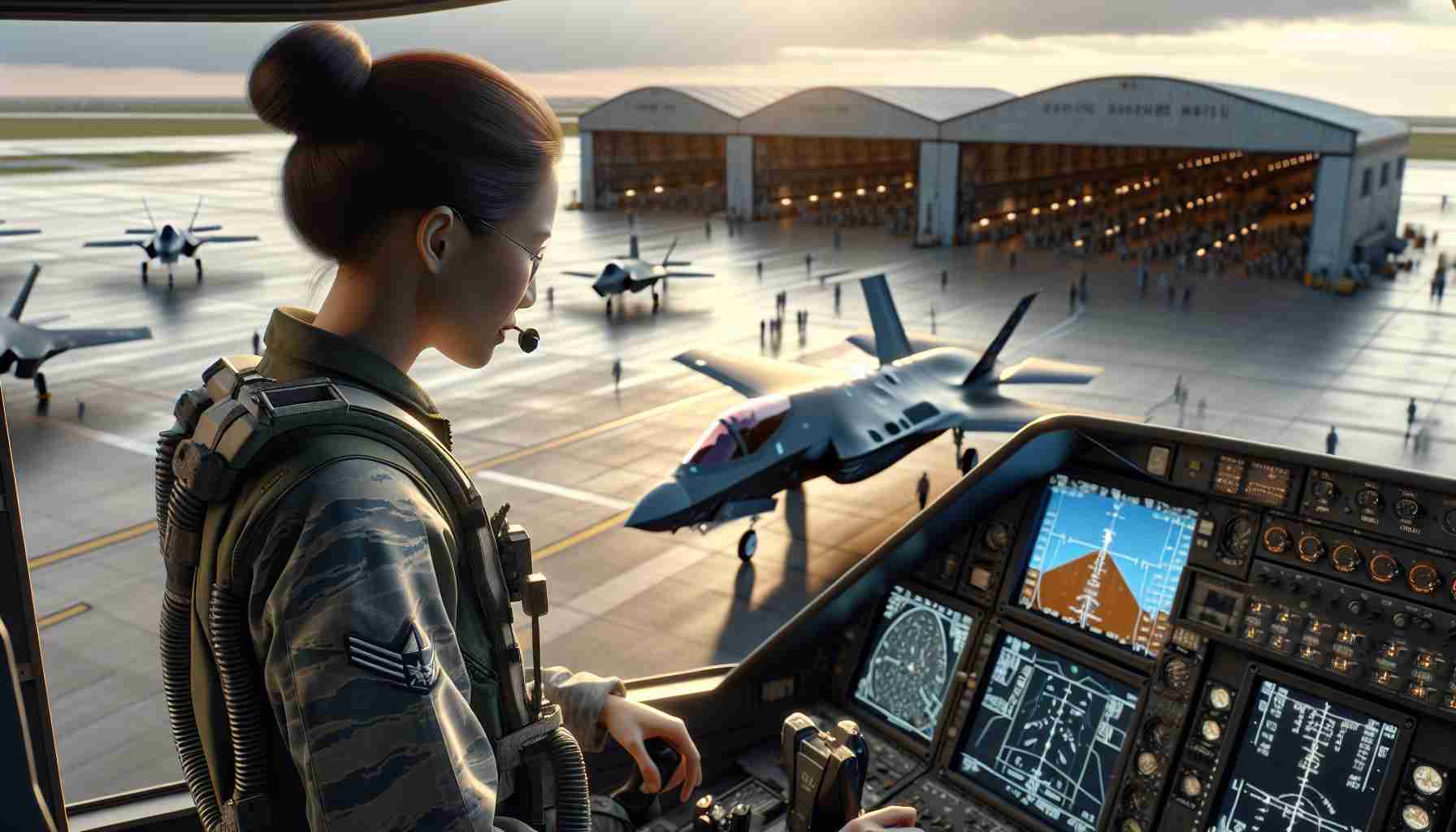- The US Air Force has enhanced the F-35 fighter jets’ capabilities in response to increased missile threats from China.
- Recent tests have implemented rapid aircraft regeneration and deployment strategies to ensure jets are battle-ready quickly.
- The hot integrated combat turn (ICT) technique significantly reduces refueling and rearming time while keeping engines running.
- This innovation aims to address vulnerabilities of aircraft on the ground, where most combat losses are expected to occur.
- The USAF is collaborating with other military branches to improve operational efficiency and safety during high-pressure situations.
- This initiative is part of a broader strategy to maintain air superiority amidst rising global tensions.
In a thrilling response to escalating missile threats from China, the US Air Force (USAF) has turbocharged the capabilities of its F-35 fighter jets. Recent tests at Nellis Air Force Base, Nevada, focused on rapid aircraft regeneration and deployment, ensuring these cutting-edge jets stay lethal on the ground.
During an intense hot integrated combat turn (ICT), maintenance crews refueled and armed the F-35A Lightning II with advanced air-to-air missiles—all while keeping its engines running. This revolutionary method, reminiscent of operations on older military aircraft, now fortifies the F-35 against ground vulnerabilities. Traditionally, turning off engines for maintenance could take hours, but the ICT slashes this time, allowing jets to be battle-ready in minutes.
This innovation is not just about efficiency; it’s a key survival strategy amid heightened tensions in the Indo-Pacific. With reports indicating that up to 90% of potential losses could occur on the ground during a conflict with China, the Air Force is determined to change the game. By embracing input from various military branches, including valuable Marine Corps insights, the USAF is pioneering safer, faster refueling and rearming practices.
The stakes are high, and this groundbreaking approach marks a significant leap in the USAF’s goal to maintain air superiority. As global tensions rise, this initiative not only enhances the survivability of the F-35 but also ensures that American air power can respond decisively when called upon. The key takeaway? The US Air Force is ready to adapt and evolve to meet modern threats head-on, ensuring that its fighter jets remain a formidable presence in a volatile world.
F-35’s New Combat Edge: Rapid Readiness to Counter Missile Threats
The Evolution of the F-35 Fighter Jet
In response to mounting missile threats from China, the U.S. Air Force (USAF) has significantly enhanced the operational capabilities of its F-35 fighter jets. Recent trials at Nellis Air Force Base in Nevada have centered on rapid aircraft regeneration and deployment, fundamentally shifting how these advanced jets are prepared for combat.
This new strategy focuses on conducting intense hot integrated combat turns (ICT) that allow maintenance crews to refuel and rearm the F-35A Lightning II while keeping its engines operational. Previously, maintenance procedures often required the aircraft to be powered down, which could extend readiness times to hours. With the implementation of ICT, this procedure can now be completed in mere minutes, drastically improving the aircraft’s battle readiness.
Innovations in Aircraft Readiness
The enhanced capabilities are not just about speed; they represent a crucial survival strategy amid increasing geopolitical tensions, particularly in the Indo-Pacific region. Notably, reports suggest that during potential conflict scenarios with China, approximately 90% of possible aircraft losses may occur while the jets are on the ground. By refining quick refueling and rearming methods and incorporating insights from various military branches, including the Marine Corps, the USAF is pioneering new operational protocols designed to increase the safety and effectiveness of its fighter jets.
Key Features and Future Perspectives
This progressive approach significantly strengthens the USAF’s ambitions to maintain air superiority. By adapting to contemporary threat environments, the USAF ensures that its fighter jets, like the F-35, remain not only relevant but also a dominant force in global military arsenals. The advancements in ICT and rapid preparedness highlight the ongoing evolution of military technology and tactics.
Most Important Related Questions
1. What are the main features of the enhanced ICT for the F-35?
The Hot Integrated Combat Turn (ICT) involves the ability to refuel and rearm the F-35A Lightning II without shutting down its engines. This process significantly shortens the time required for maintenance, enabling the aircraft to be combat-ready in minutes instead of hours.
2. How does this development influence U.S. military strategies in potential conflicts?
By increasing the aircraft’s readiness and survivability on the ground, the USAF is adapting its strategies to mitigate potential vulnerabilities against threats, particularly as tensions rise in the Indo-Pacific. Maintaining air superiority becomes a more feasible objective when operational downtime is minimized.
3. What other innovations is the USAF pursuing with the F-35 program?
Besides ICT, the USAF is investing in systems for enhanced situational awareness, improved sensor capabilities, and further integration with joint military operations. Continuous learning from field operations and allied forces’ experiences is expected to drive further advancements.
For more detailed information and updates on the F-35 and related military strategies, visit U.S. Air Force.
